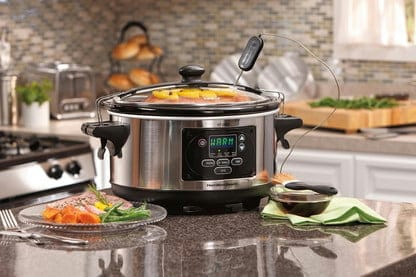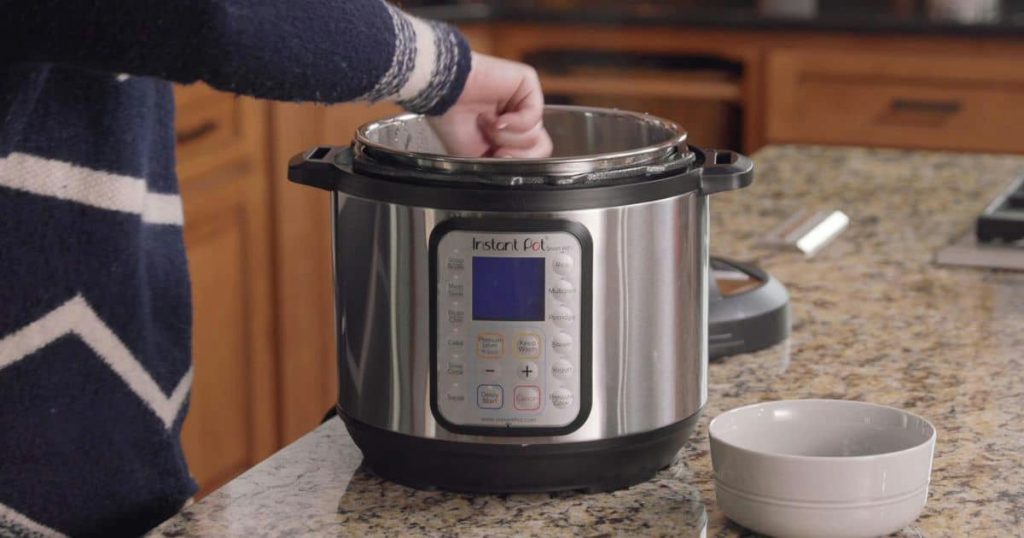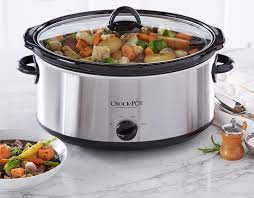Is it possible to pause and restart a slow cooker?

A slow cooker is designed to be a set-it-and-forget-it gadget. Place the food in the container and leave it alone for 4–8 hours. The issue with the extended cook time is that you may not be ready to start cooking at the exact time you need to. Could you switch off your slow cooker for a few minutes and let it finish cooking later?
Should you turn off a slow cooker and then resume it?
While stopping and restarting a slow cooker is theoretically feasible, it is not advised since it enables the food, particularly meat or dairy, to get to room temperature. This provides conditions for germs to grow, potentially resulting in food poisoning for you and anybody else who consumes your food. So, while you may want to avoid turning on and off the slow cooker, are there any choices for achieving this goal? Let’s go over those, as well as why stopping your slow cooker is a bad idea.
Why Is It Necessary to Avoid Stopping and Starting Your Slow Cooker?
The most crucial thing to keep in mind during slow-cooking (or any cooking) is the risk of germs that can make you sick, multiplying and spreading on your food. Bacteria grow at a temperature range known as the danger zone, ranging from 41°F to 145°F. This implies that the bacteria cannot grow in your refrigerator because it is too cold and your slow cooker is too hot. Be advised that some items, such as poultry, must be heated to 165°F to be safe. The cold does not kill the germs, and some can survive cooking heat; the temperatures are too high for them to increase. This implies that even after refrigeration and heating, the food may still contain hazardous germs waiting for the proper circumstances to increase and make you sick. The meal may safely remain in the slow cooker at high heat for a continuous period, but once it’s removed from the heat, there’s a ticking clock on either eating it or having it cooled down again. If you take out your food from the heat and allow it to cool to room temperature, it will reach the danger zone, where any bacteria present will be able to reproduce, increasing the risk of foodborne illness.
What Else Can You Do?

If momentarily removing the meal from the heat isn’t an option, what other choices do you have to control the cooking time safely? Here are some suggestions.
Cook it for a little longer.
Most slow cooker recipes provide minimum cook times rather than specific cook durations. Slow cookers are quite forgiving, and many foods can benefit from “overcooking” in a slow cooker. The slow cooker maintains a constant temperature, making it difficult for anything to burn, and the cover keeps moisture to keep meat from drying out. In most cases, an extra hour or two in the slow cooker won’t hurt. This is especially important if your slow cooker has a warm option, which you can use at the end to reduce the cooking temperature while still keeping the contents hot enough to avoid infection. If you need to cook the food for an extended period, consider switching the slow cooker from high to low.
There’s no reason to be concerned about leaving the slow cooker on and unattended. Slow cookers are intended to be used alone. Experts say most current slow cookers may easily be left on for 24 hours without creating a fire danger. So leave it running while you sleep, go to work, or run errands; it will still be cooking when you return, and you will not catch Salmonella from eating it.
Begin Later
If feasible, the best method to avoid turning your slow cooker on and off is to start it at the appropriate time simply. Starting the slow cooker the proper amount of time before supper will operate uninterrupted. When it comes to slow cooking, a little forethought goes a long way.
Thoroughly cook and reheat.

It is usually preferable to overcook rather than undercook slightly. You’re significantly more likely to become sick if your meat never reaches a healthy internal temperature. Bacteria such as E. coli, Yersinia, and Salmonella must all be cooked out of beef. If you need to lay your slow cooker aside for a bit, do so after everything has finished cooking rather than before. Removing the entire slow cooker pot from the heat may appear simple, and placing it in the refrigerator is a horrible idea. However, there are some guidelines to follow. Even if the meal is entirely cooked, you shouldn’t leave it out on the counter at room temperature. You must place the food in the refrigerator. It will take much too long for your refrigerator to cool a large hot pot of food down to 41°F. As the meal cools, it may remain in the danger zone for several hours. The simplest approach is to divide the meal into individual-sized Tupperware dishes and then place each Tupperware dish in the refrigerator. The individual containers will release heat faster than a single large pot. Do not reheat in the slow cooker until you’re ready to eat. The slow cooker is too sluggish to reheat, and the food will sit in the danger zone for too long. Reheat in the oven, on the stovetop, or in the microwave, then return to the slow cooker to stay warm.
Make use of a Programmable Slow Cooker.
Many modern slow cookers come equipped with programmable timers. The issue with most slow cookers is that you have to turn them on and off manually. This is an issue if you are not going to be there when the slow cooker has to be switched on. For example, if a food has to be cooked on high for 8 hours, enter that information into the slow cooker. After 8 hours, it will automatically switch to the warm setting, keeping your food at a safe temperature and heated and ready to eat whenever you are.
Go Vegan
When it comes to foodborne disease, meat, and dairy products are the main offenders. By removing these components from your meal, you may create something far more forgiving of being cold and reheated. If the components are safe to consume at room temperature (minestrone or applesauce), the meal can be safely chilled and reheated.
Avoid putting frozen foods in the slow cooker.

You’ve probably seen those pre-prepared frozen dinners that are designed to be thrown right into the slow cooker from the freezer. You should avoid placing frozen meals directly into the slow cooker for the same reason you don’t want to stop and start. Again, the slow cooker will not heat these items quickly enough, leading them to cross into the danger zone temperature range for an unacceptably long time. To be safe, properly thaw frozen goods before placing them in the slow cooker. To quickly bring frozen meals to room temperature, use a microwave or a sink full of warm water.











